The Canadian Style: How Centre Block’s carvers fell under a northern spell

In February 2019, the Senate moved to the Senate of Canada Building, a former train station built in 1912. The Senate will occupy this temporary location while Parliament’s Centre Block — the Senate’s permanent home — is rehabilitated.
Although Centre Block is shuttered for rehabilitation work, Canadians can still experience its art and architecture — as well as the Senate of Canada Building’s — through the Senate’s immersive virtual tours.
A team of sculptors have been reversing a century of wear and tear on Centre Block’s exterior carvings. As they progressed from the building’s east side to its weather-beaten west side, they saw how the European-trained carvers tasked with adorning Centre Block after the fiery loss of the original Parliament Building in 1916 fell under the influence of their Canadian surroundings.
“Centre Block starts to morph from traditional Gothic,” Dominion Sculptor John-Philippe Smith said.
“You’re no longer just seeing grotesques and medieval-looking foliage. You’re starting to see Canadian plants like maple, pickerel weed and pinecones, and Canadian animals like bison, moose and wolves.”

From 1917 to 1924, the director of the carving program was Walter Allen, an expert in Gothic design who mastered his craft restoring some of England’s most iconic cathedrals, including Durham, Salisbury and Winchester.
“Walter Allen set the tone for the sculptural aesthetic of the new Centre Block,” Mr. Smith said. “He was a master of Gothic carving who was interested in exploring new subject matter, particularly Canadian flora and fauna.”

The carvers on Mr. Allen’s team, largely trained in Europe, brought decades of experience to the project. While work in the traditional Gothic style is more evident on the 19th-century East Block and West Block buildings, the carvers became increasingly inspired by Canada as they worked on Centre Block.
One west-facing window dormer, for example, is crowned by a bison.
“Could anything represent the Prairies better?” Mr. Smith asked. “That’s the Canadian lawnmower.”
Other pieces look like they leapt straight off a 14th-century European cathedral. There’s a human-faced dragon with one protruding eye — “We call him the cyborg,” Mr. Smith said — and a beaked dragon that appears to be gnawing its own feet.
But the years have not been kind to the bison or to his friends and relations, particularly those on the west side.
“This is the facade that gets the most prevailing wind,” Mr. Smith said. “This is where we’re seeing the most deterioration and where the bulk of our work lies for some time to come.”
Mr. Smith and his eight-person Decorative Arts Team have already spent the last two years restoring dozens of weather-damaged carvings. As the building undergoes a massive overhaul, hundreds of sculptures are being assessed, repaired and sometimes replaced altogether.
A temporary studio has been set up close to the construction site, allowing the Decorative Arts Team to carve in a spacious, uncluttered workspace during the warmer months.

The new facility has streamlined the restoration process. Sculptors no longer need to capture moulds on site. Now, entire stone sculptures can be removed from Centre Block and transported to the workshop.
No need to cast plaster copies either; sculptors can apply plaster directly onto the original. Plaster can be molded like clay when it’s wet, then chiselled, carved and textured like stone once it dries. The rebuilt original then serves as the template for the final version in stone.
“It’s plaster straight to stone,” Mr. Smith said. “With plaster, we can add on, subtract and get it right where we want it.”
The final stages of carving are about getting the sculpture to stand out when viewed from a distance.
“When a piece is almost complete, we gather as a team and evaluate it,” Mr. Smith said. “We look for places where legibility could be improved with deeper carving or more definition.”
“When I apprenticed in France, we called it, ‘aller chercher la noirceur’ — go get the shadows.”
It may be a struggle to recreate a 100-year-old sculpture based on little more than a lump of weathered stone, but Mr. Smith and his team clearly enjoy the challenge.
“Once the carving starts to reveal itself and you see it, you switch into cruise control and just enjoy the ride.”
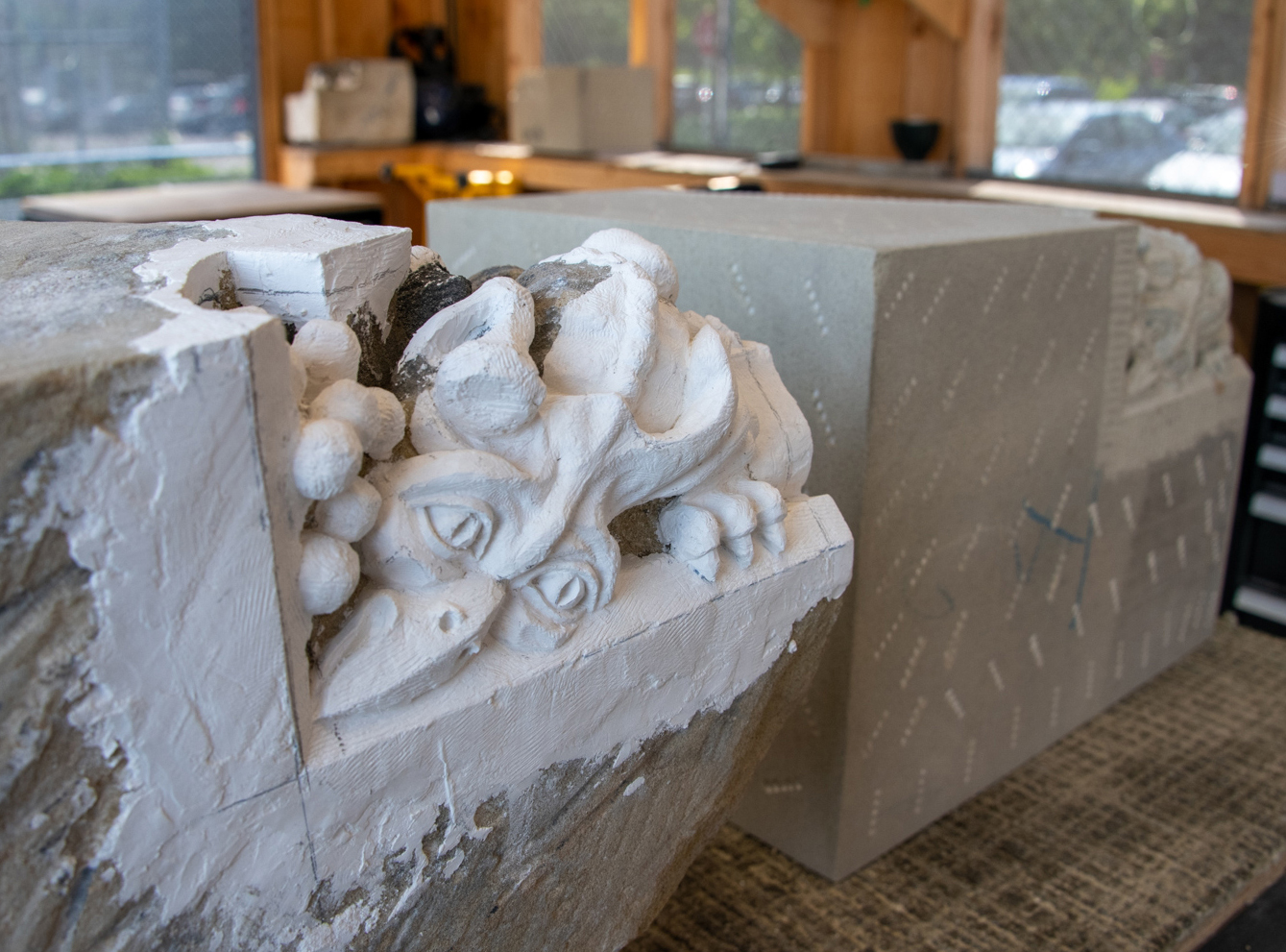
A carving of a bird-beaked dragon takes shape in Parliament’s Decorative Arts Studio. The version in the foreground is sculpted in plaster applied directly on top of the weathered stone original. It serves as a carving guide for the nearly complete replacement in the background. (Photo credit: Public Services and Procurement Canada)

Sculptor George Moldovan adds finishing details to the sculpture. (Photo credit: Public Services and Procurement Canada)
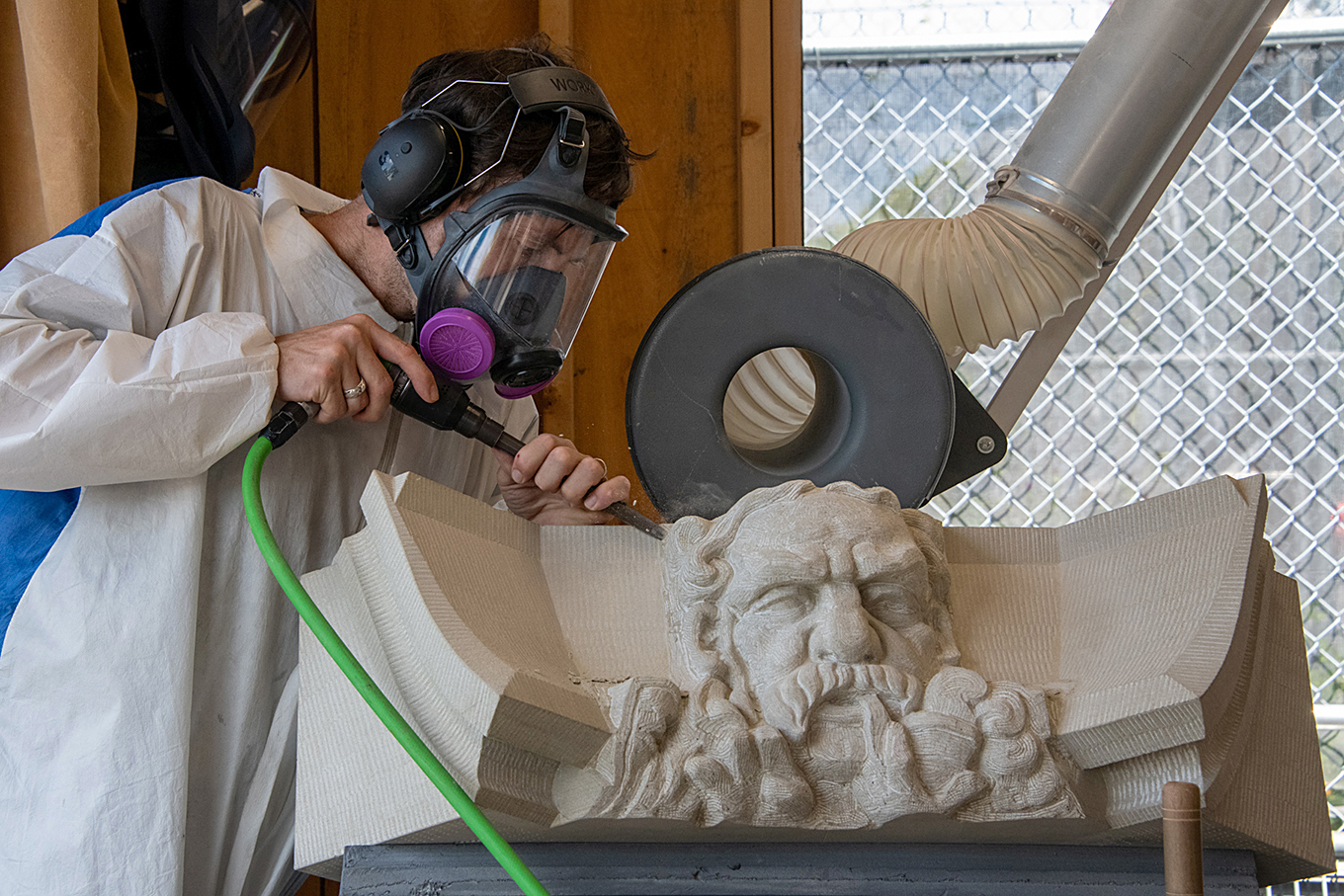 Sculptor Nicholas Thompson uses a pneumatic drill to work on a character dubbed Pipe Man by the carving team. (Photo credit: Public Services and Procurement Canada)
Sculptor Nicholas Thompson uses a pneumatic drill to work on a character dubbed Pipe Man by the carving team. (Photo credit: Public Services and Procurement Canada)
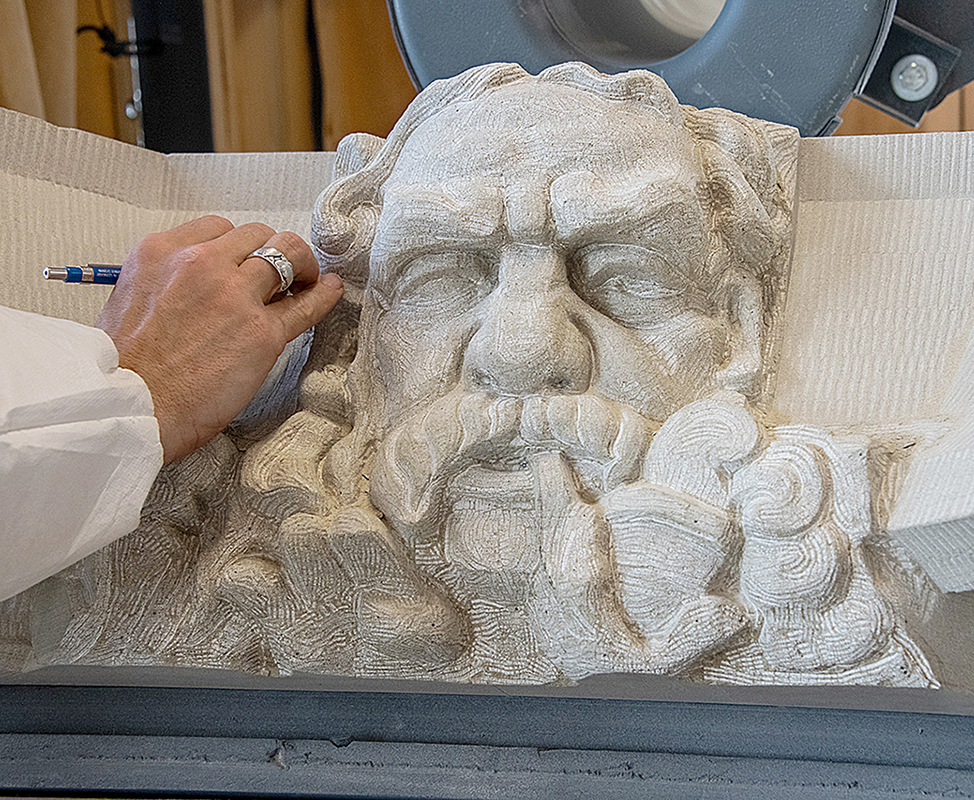
Mr. Thompson works with a fine chisel to refine details and add subtle textures to the nearly complete carving. (Photo credit: Public Services and Procurement Canada)
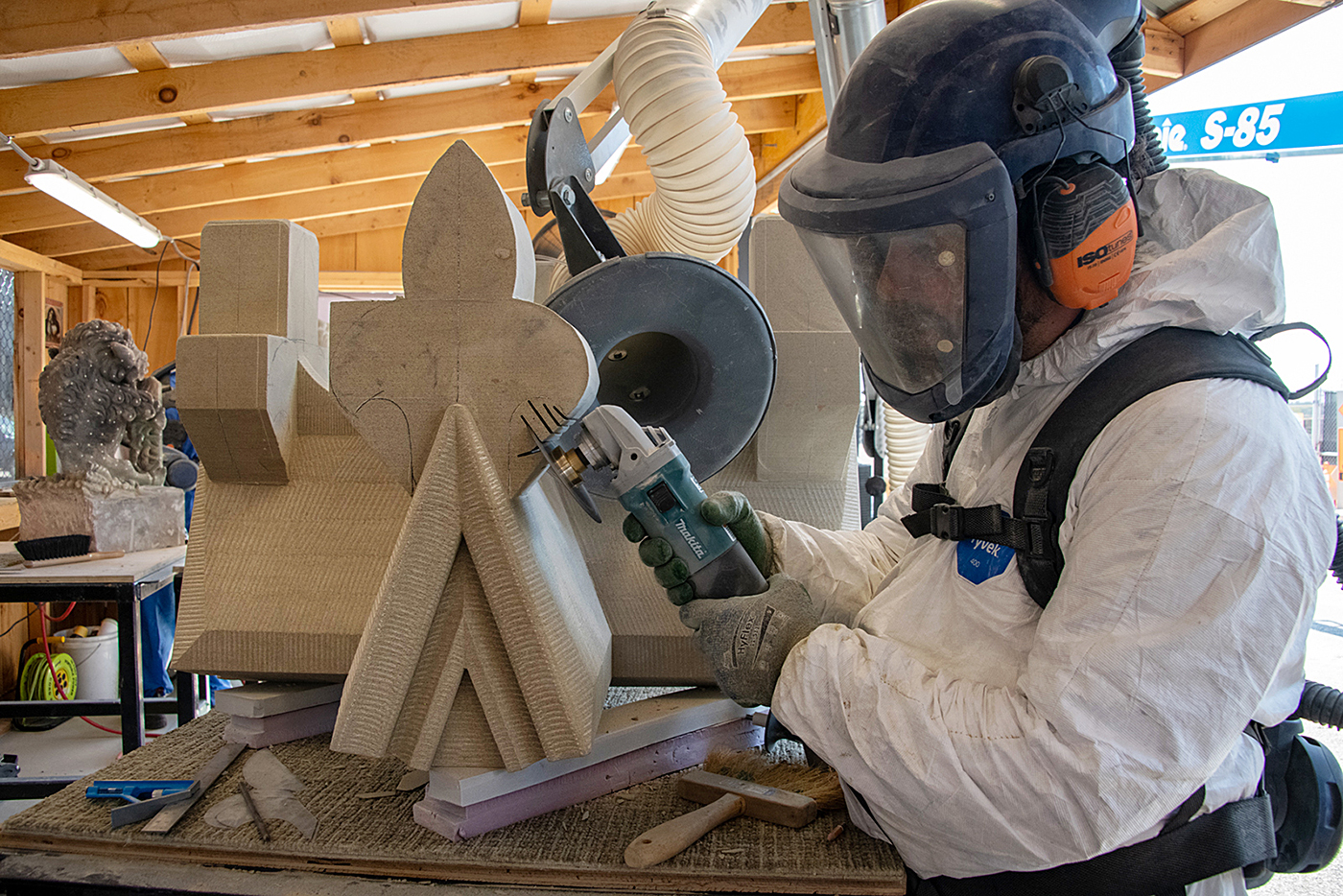 Sculptor Danny Barber works on a fleur-de-lis that crowns a buttress on Centre Block’s west side. Falling ice had completely sheared off the original. (Photo credit: Public Services and Procurement Canada)
Sculptor Danny Barber works on a fleur-de-lis that crowns a buttress on Centre Block’s west side. Falling ice had completely sheared off the original. (Photo credit: Public Services and Procurement Canada)
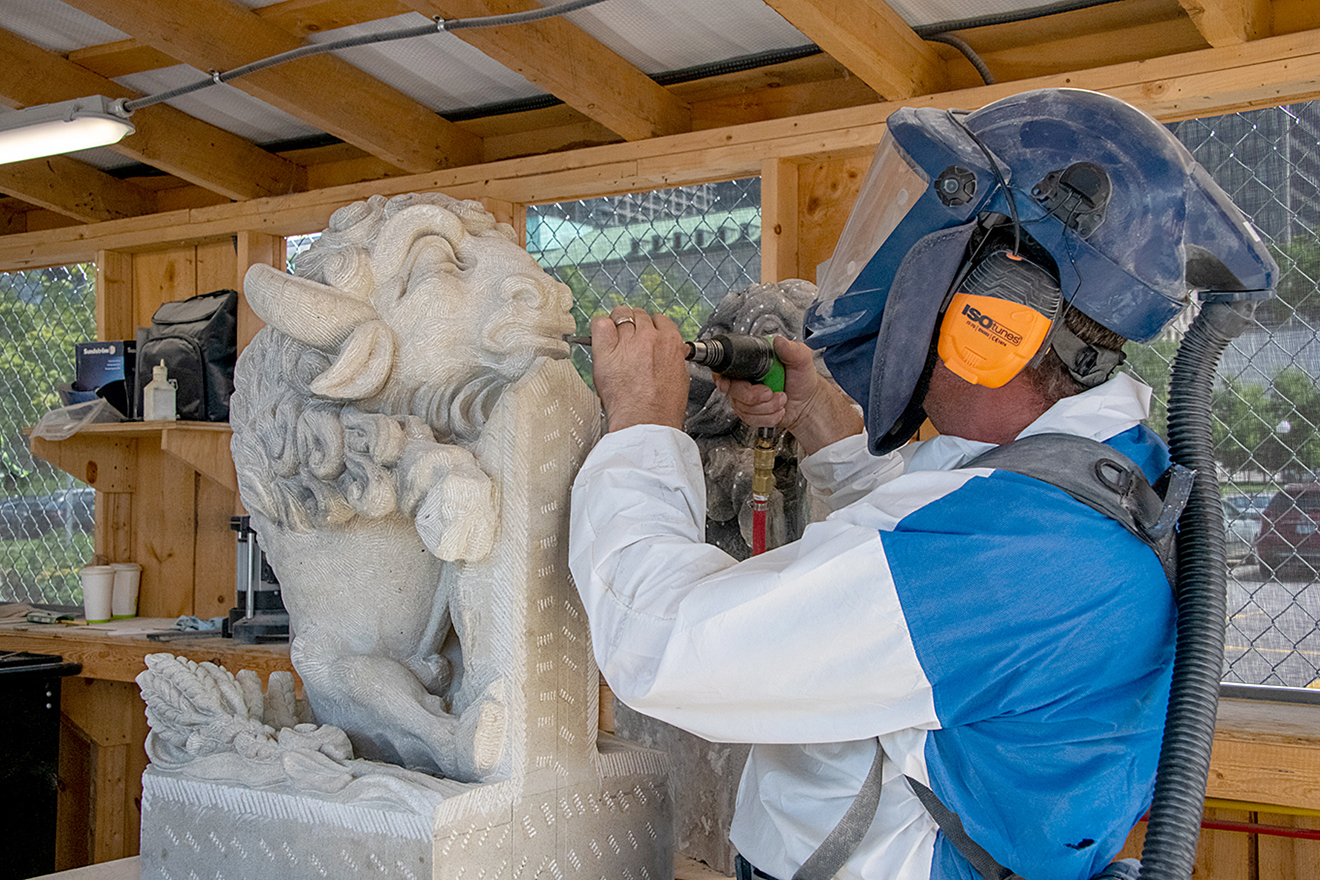 Sculptor Danny Barber works on a carving of a bison that crowns a dormer above a window. It’s part of a series that includes other Canadian mammals such as moose, bears and wolves. (Photo credit: Public Services and Procurement Canada)
Sculptor Danny Barber works on a carving of a bison that crowns a dormer above a window. It’s part of a series that includes other Canadian mammals such as moose, bears and wolves. (Photo credit: Public Services and Procurement Canada)
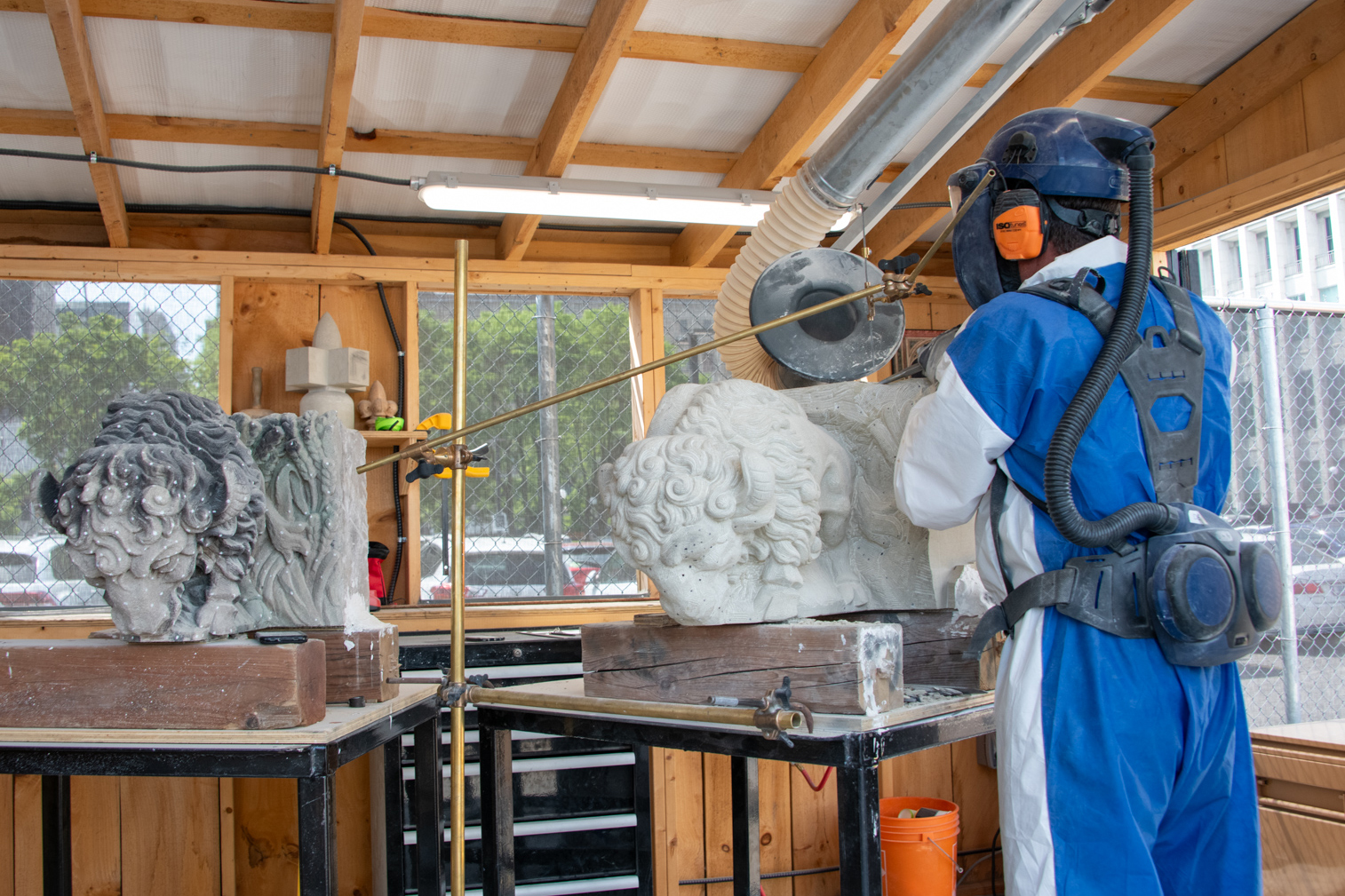 Mr. Barber uses a pointing machine to transfer measurements from the original carving to its duplicate. The device, invented in the 1700s, uses a stylus to pinpoint features on the original and a flexible arm to transfer their exact co-ordinates to the duplicate. (Photo credit: Public Services and Procurement Canada)
Mr. Barber uses a pointing machine to transfer measurements from the original carving to its duplicate. The device, invented in the 1700s, uses a stylus to pinpoint features on the original and a flexible arm to transfer their exact co-ordinates to the duplicate. (Photo credit: Public Services and Procurement Canada)
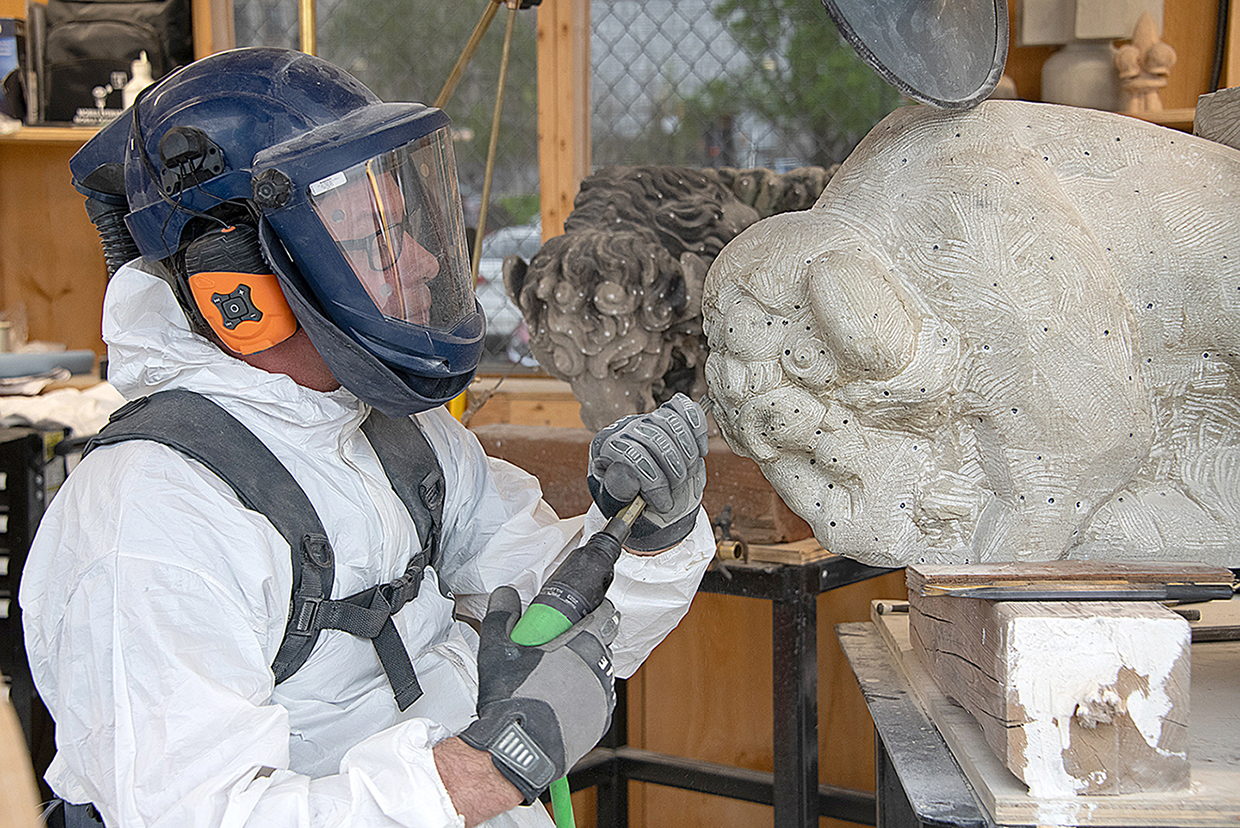 Sandstone contains silica that, when inhaled, can lead to respiratory diseases such as pulmonary fibrosis. Mr. Barber wears protective gear that includes Tyvek coveralls and an air-powered respirator as he works with a pneumatic chisel. (Photo credit: Public Services and Procurement Canada)
Sandstone contains silica that, when inhaled, can lead to respiratory diseases such as pulmonary fibrosis. Mr. Barber wears protective gear that includes Tyvek coveralls and an air-powered respirator as he works with a pneumatic chisel. (Photo credit: Public Services and Procurement Canada)


